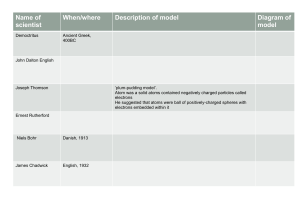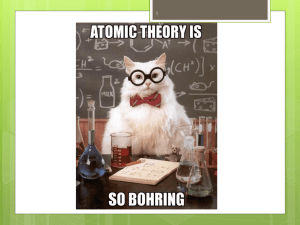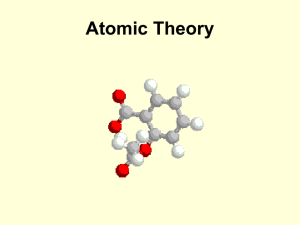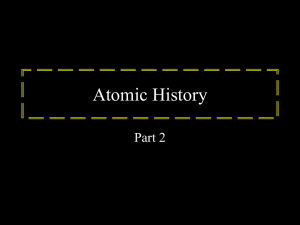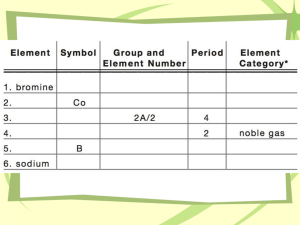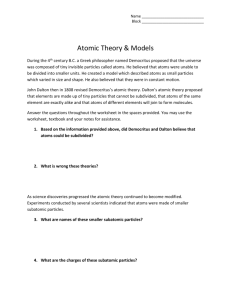Atomic Theory
advertisement
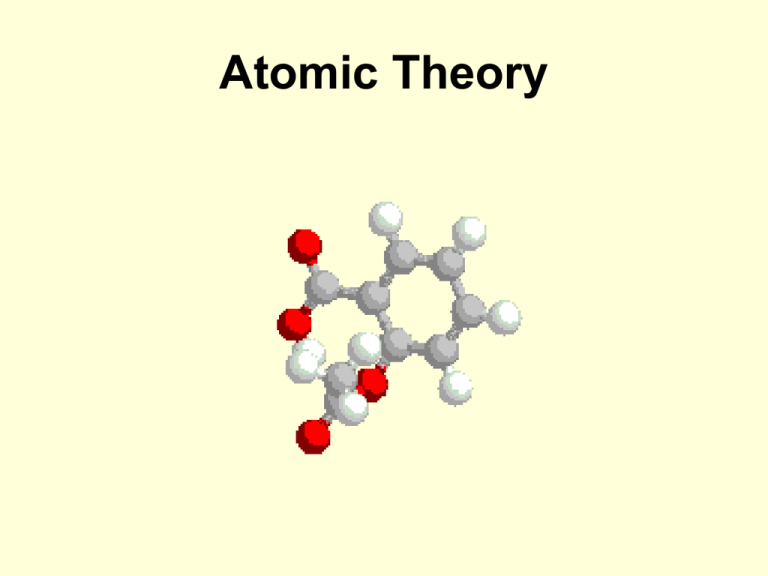
Atomic Theory Let’s Take a Trip Through Time! Atomic Theories Timeline Name Time Frame Key Points Democritus Dalton Thompson Rutherford Bohr Schrödinger Heisenberg Democritus 460 – 370 B.C. • There are various basic elements from which all matter is made • Everything is composed of small atoms moving in a void • Some atoms are round, pointy, oily, have hooks, etc. to account for their properties • Ideas rejected by leading philosophers because void = no existence First Concept of an Atom John Dalton 1766-1844 • Introduced his ideas in 1803 • Each element is composed of extremely small particles called atoms • All the atoms of a given element are identical, but they differ from those of any other element • Atoms are neither created nor destroyed in any chemical reaction • A given compound always has the same relative numbers and kinds of atoms Dalton’s Model J.J. Thompson 1856-1940 • Discovered electron 1897 – Cathode Ray Experiment • Plum Pudding model 1904 – Electrons in a soup of positive charges • Discovered isotopes 1913 JJ Thompson’s Ideas Cathode Ray Tube Experiment Plum Pudding Model Ernest Rutherford 1871-1937 • Nucleus Theory 1910 – alpha particle gold foil experiment • An atom’s mass is mostly in the nucleus • The nucleus has a positive charge (Moseley) • Electrons in fixed orbit Alpha Particle Experiment Rutherford Model Niels Bohr 1885-1962 • Planetary Model 1913 – Nucleus surrounded by orbiting electrons at different energy levels – Electrons have definite orbits • Utilized Planck’s Quantum Energy theory • Worked on the Manhattan Project (US atomic bomb) Bohr’s Model Bohr Model for Nitrogen Ernst Schrödinger 1887-1961 Werner Heisenberg 1901-1976 • Quantum Mechanical Model 1926 – Electrons are in probability zones called “orbitals”, not orbits and the location cannot be pinpointed – Electrons are particles and waves at the same time – Developed quantum numbers based on theories of Einstein and Planck Orbitals Quantum Mechanical Theory Electron in a Hydrogen atom James Chadwick • In 1932 the physicist James Chadwick in England performed a series of experiments and suggested that in fact the new radiation consisted of uncharged particles and he performed a series of experiments verifying this. These uncharged particles were called neutrons Proton, Electron, Neutron • So…. Recap, who discovered the proton, electron, and neutron?? • The electron was originally discovered by J.J. Thomson when he realized there were negatively through the cathode ray experiment. • The proton is credited to Ernest Rutherford with his gold foil experiment, noticing the alpha particles were being deflected all over. • Lastly, the neutron was discovered by James Chadwick after realizing there was more to the atom than just positively charged particles inside and negatively charged particles orbiting around the outside. Atomic Theory James Chadwick JJ Thomson Democratus 400 BC 1803 John Dalton 1904 Niels Bohr 1910 Ernest Rutherford 1913 1926 Schroedinger / Heisenberg 1932
